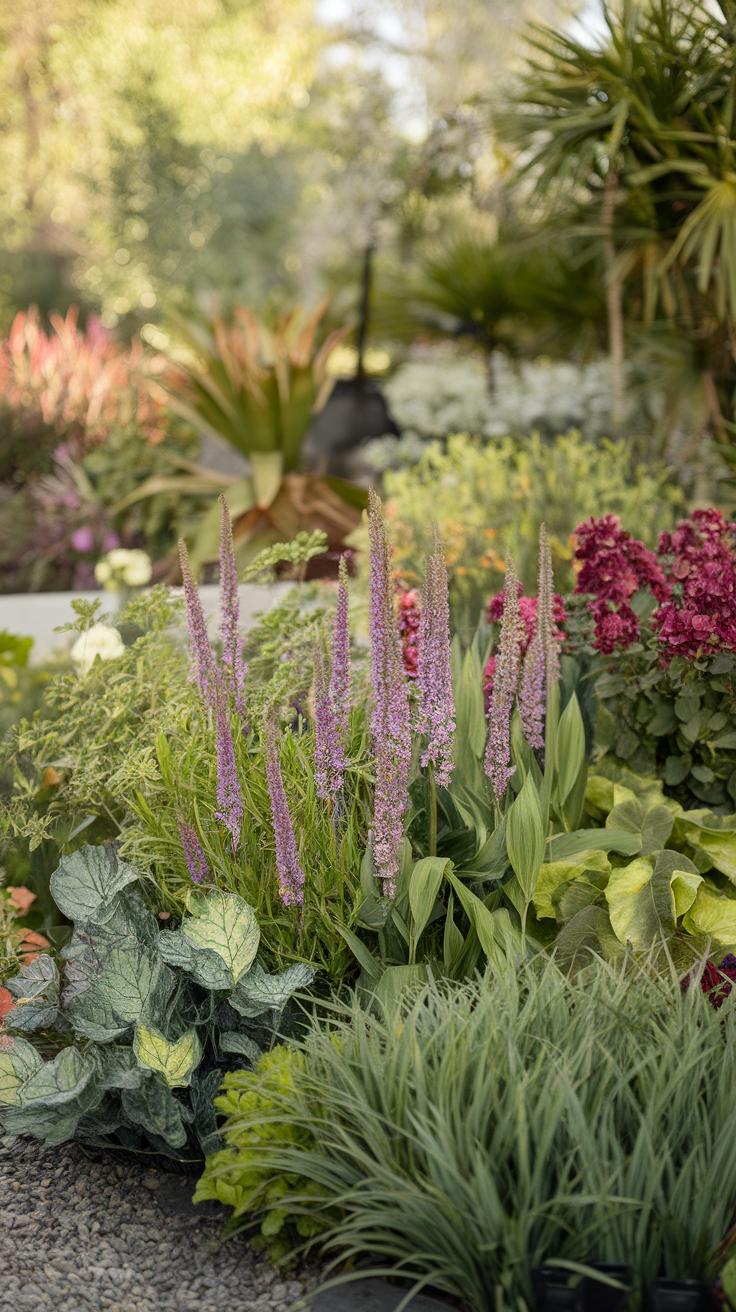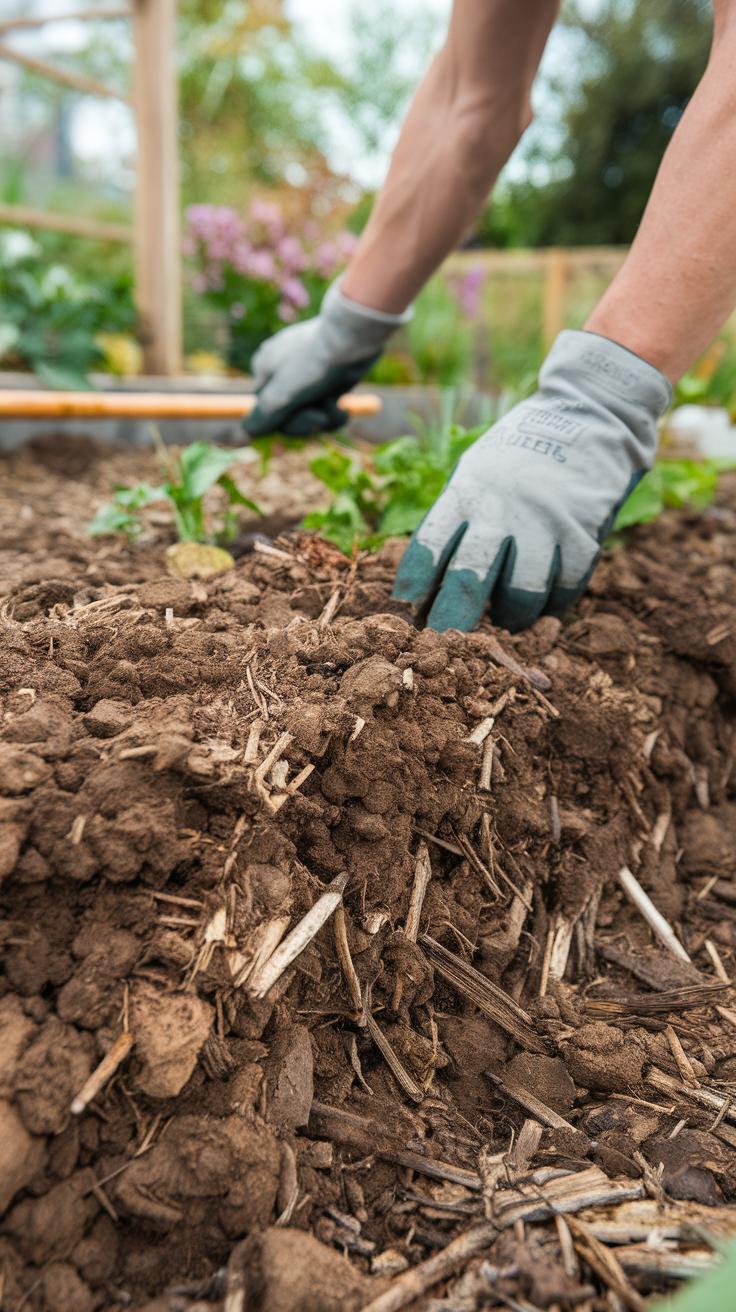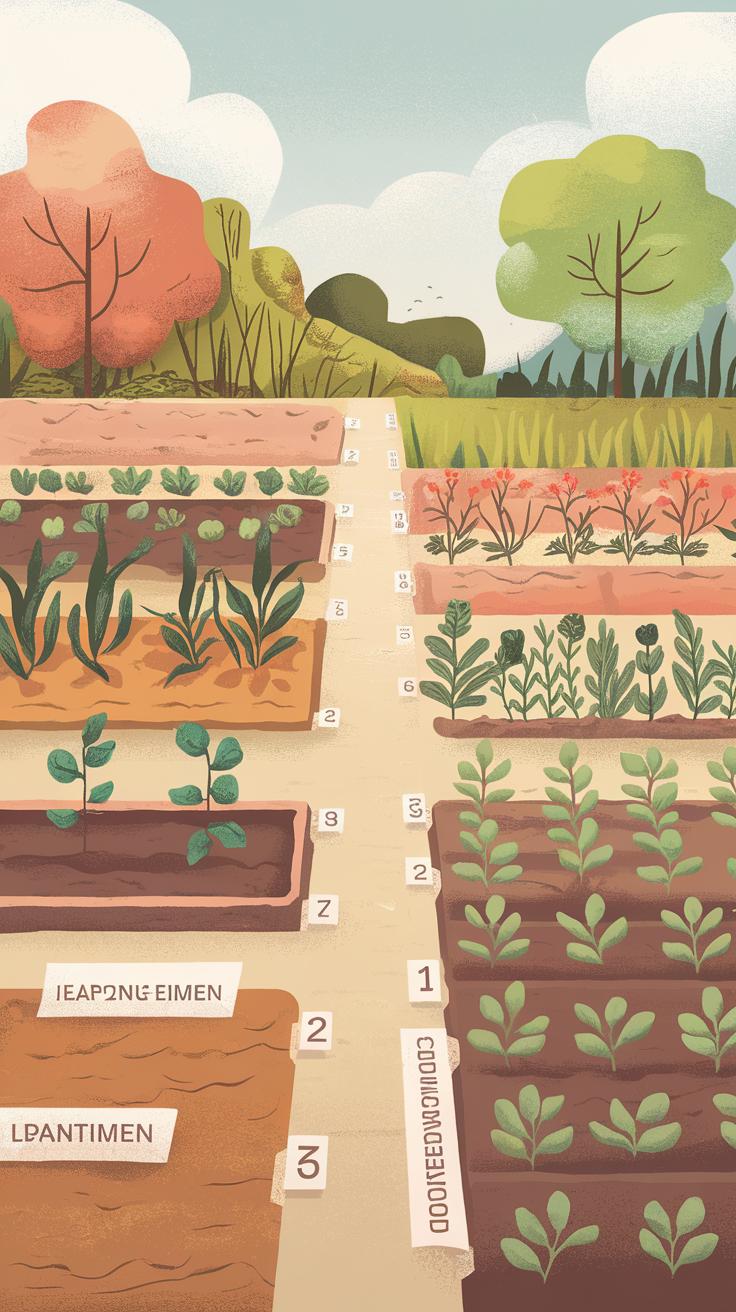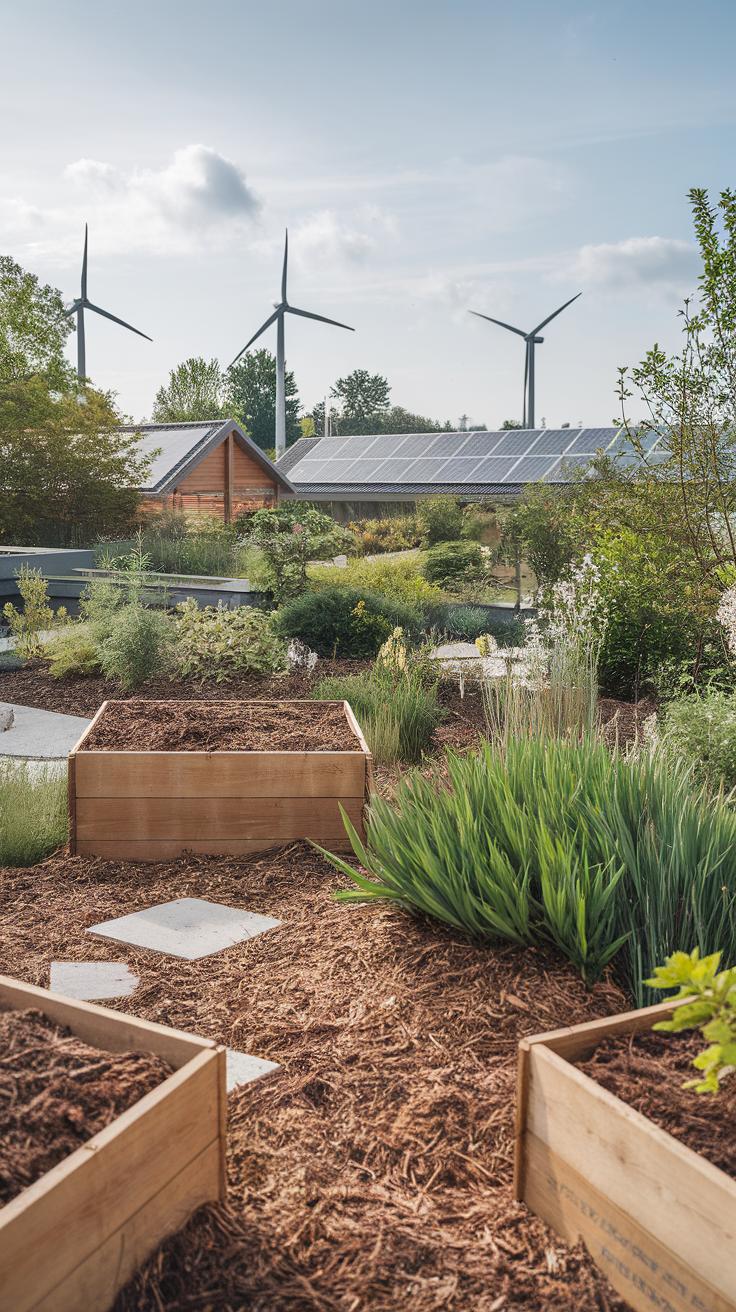Introduction
Garden planning serves as the foundation for creating a vibrant, flourishing landscape that meets the aesthetic and functional needs of each gardener. With thoughtful design, one can ensure that the garden evolves beautifully across the seasons, showcasing a variety of colors, textures, and fragrances. This article delves into expert garden planning strategies that are adaptable to both novice and experienced gardeners. It encourages an understanding of the climatic conditions, soil types, and plant selection crucial for realizing a year-round garden.
In exploring the intricacies of garden planning, readers will discover techniques for season-specific gardening, incorporating sustainable practices, and maximizing space. The following sections will cover essential considerations, including the right choice of plants, effective layout design, and proper maintenance routines. By the end of this article, you will be well-equipped to implement a cohesive gardening plan aimed at not only enhancing your environment but also promoting biodiversity and sustainable growth.
Understanding Seasonal Changes The Impact on Garden Planning

Planning a garden requires a keen understanding of how seasonal changes influence growth cycles and overall landscape aesthetics. Weather patterns, such as temperature fluctuations and precipitation variations, play a significant role in determining the best time for planting and harvesting. For instance, warmer climates may allow for year-round gardening, while colder regions necessitate careful timing to prevent frost damage.
Different plants demonstrate unique responses to varied seasons; some thrive in the warmth of summer while others flourish in cool spring or fall temperatures. Additionally, winter conditions can offer opportunities for certain perennials to reach dormancy and prepare for eventual reblooming. Recognizing these seasonal dynamics allows gardeners to select appropriate planting times and care techniques, ultimately fostering a more resilient and beautiful garden.
Choosing the Right Plants for Seasonal Suitability
Selecting plants that are well-suited for specific seasons is vital for creating a thriving garden. Native plants, in particular, offer numerous advantages; they are adapted to local climate conditions, soil types, and ecosystems. This inherent suitability amplifies their resilience, requiring less maintenance, irrigation, and pest management than non-native species.
Incorporating a variety of native plants enhances biodiversity, providing essential habitats for local wildlife and pollinators. Seasonal blooms can be timed effectively to create a continuous display of color and interest throughout the year, transforming the garden into a dynamic living space. Ultimately, aligning plant choices with seasonal characteristics ensures both visual appeal and environmental harmony, establishing a garden that not only survives but flourishes through every season.
Choosing the Right Plants Seasonal Suitability and Native Options

The Importance of Seasonal Plant Selection
Selecting plants that align with seasonal cycles is fundamental for a thriving garden. Different plants have unique growth patterns, flowering schedules, and nutritional needs that coincide with seasonal temperatures and moisture levels. When choosing plants, consider their bloom times and maintenance requirements throughout the year. For instance, certain flower perennials might flourish in spring and summer, whereas deciduous plants provide vibrant autumn colors. Tailoring your selections ensures that your garden remains dynamic and visually engaging across seasons, ultimately creating a landscape that constantly evolves.
Benefits of Native Plants
Incorporating native plants into your garden is a wise strategy, as they are well-adapted to your local climate and soil conditions. These plants often require less water and maintenance compared to non-natives, making them sustainable choices. Native flora also supports local wildlife, including beneficial insects and pollinators, enhancing biodiversity. By choosing native species, gardeners can foster resilient ecosystems while maintaining beautiful, seasonally appropriate landscapes. Investing in plants that are naturally adapted to your environment not only ensures their success but positively contributes to the local ecosystem’s health.
Layout Design Principles Creating Functional and Visually Appealing Gardens

Guiding Principles of Garden Design
Effective layout design principles serve as the cornerstone of successful garden planning. A well-considered garden layout maximizes space and aesthetics while accommodating diverse plant selections suited to different seasons. Key aspects include proper plant placement based on sunlight and moisture levels, ensuring accessibility for maintenance, and creating visual balance through color schemes and focal points. These principles are crucial to fostering a harmonious environment where plants can thrive and aesthetics can shine.
Exploring Common Garden Styles
Familiarizing yourself with various garden styles aids in making informed choices that suit your personal taste and functional needs. Traditional gardens often emphasize symmetry and formal designs, while cottage gardens embrace a more relaxed, mixed planting approach. Contemporary gardens typically flaunt minimalism and structured elements. Understanding these styles allows seasonal planning to align with design preferences, creating not only a thriving ecosystem but also a coherent visual narrative throughout the year.
Soil Preparation and Nutrient Management

Significance of Soil Preparation in Seasonal Planning
Successful garden planning begins with a firm grasp of soil preparation and nutrient management. Healthy soil serves as the foundation for thriving plants, as it provides essential nutrients, water retention, and adequate drainage. Different seasons demand varying soil conditions; hence, understanding the specific needs of each type aids in effective cultivation. For example, autumn is an ideal time for incorporating organic matter, while spring may require soil testing to adjust pH levels and nutrient content. The process of amending soil with compost or fertilizers tailored to seasonal plant varieties enhances growth potential and results in a bountiful harvest.
Nutrient Management Throughout the Seasons
Implementing a robust nutrient management plan requires continuous monitoring. Seasonal gardening necessitates varying nutrient profiles to meet the growth stages of plants. During spring, applying balanced fertilizers promotes vigorous growth, whereas during the peak summer months, a shift towards calcium and magnesium-rich amendments can improve fruit and blossom development. As autumn approaches, potassium helps in preparing plants for dormancy and enhances resilience. An understanding of nutrient cycles ensures that the garden remains vibrant throughout the year, producing an abundance of flowers, fruits, and vegetables.
Effective Watering Strategies Best Practices for Seasonal Garden Hydration

Season-specific Watering Techniques
Proper hydration is paramount for vibrant, healthy plants. In spring, focus on frequent, shallow watering to promote root establishment. With the emergence of new growth, moisture levels must remain consistent. As summer heat peaks, adjust to deeper watering less often, encouraging roots to delve into cooler, moist soil. Morning is the ideal time for watering, as it minimizes evaporation and fungal risks. In autumn, when the weather cools, reduce frequency while maintaining adequate hydration to prepare plants for winter dormancy. Winter watering is nuanced; if conditions are dry, water to prevent desiccation while avoiding soggy soil.
Techniques for Efficient Water Usage
Implementing strategies such as drip irrigation or soaker hoses can enhance water efficiency, delivering moisture directly to root zones. Collecting rainwater with barrels offers an eco-friendly approach to meet watering needs. Mulching retains soil moisture, reducing evaporation and stabilizing soil temperature. Monitoring weather conditions is vital; adjust watering schedules based on rainfall and temperature changes. By applying these effective watering strategies throughout the seasons, gardeners ensure that their plants thrive and flourish in a well-balanced ecosystem.
Seasonal Pruning and Maintenance Key Practices for Healthy Growth

Understanding the Role of Seasonal Pruning
Seasonal pruning plays a vital role in maintaining the health and vigor of garden plants. By removing dead, damaged, or overgrown branches, gardeners allow for better air circulation and sunlight penetration. This not only minimizes disease risk but also promotes new growth. Each season brings different requirements; for instance, winter pruning often prepares shrubs and trees for vibrant spring growth while summer pruning helps shape plants and curb excess growth. An informed approach to pruning ensures that plants remain well-balanced and productive, ultimately enhancing the overall garden aesthetic.
Maintenance Practices that Enhance Plant Health
Routine maintenance tasks are equally essential for robust garden health. Tasks such as mulching, weeding, and soil amendment improve the growing environment. Mulch conserves moisture and suppresses weeds, allowing plants to thrive without competing for nutrients. Regularly checking for pests and diseases and applying appropriate remedies can prevent minor issues from escalating. Adapting maintenance strategies seasonally aligns with the plant’s growth cycles, ensuring that the garden remains lush and resilient throughout the year, thus laying a foundation for bountiful blooms and harvests.
Embracing Biodiversity in the Garden Integrating Ecological Diversity into Garden Planning

The Role of Biodiversity in Garden Design
Incorporating biodiversity into garden planning is vital for creating a thriving ecosystem. Diverse plant species attract various pollinators, beneficial insects, and other wildlife, fostering natural pest control. This symbiotic relationship enhances plant health and supports the garden’s overall stability. Additionally, a varied plant palette can improve soil quality, resilience, and water conservation.
Benefits for the Ecosystem
Increasing biodiversity leads to a more resilient garden that can withstand environmental stresses, such as pests or droughts. It provides essential habitats for wildlife, contributing to local ecological balance. By selecting native plants, gardeners enhance regional biodiversity, promoting the survival of local species and fostering a rich habitat. Practicing biodiversity in garden design is not merely an aesthetic choice; it nurtures the environment, ensuring vitality and sustainability for both plants and the surrounding ecosystem.
Seasonal Planting Schedules Mastering the Timing for Optimal Growth

Understanding Seasonal Planting
To achieve flourishing gardens year-round, developing a keen awareness of seasonal needs is vital. Each season presents unique opportunities for planting, influenced by temperature, soil conditions, and available sunlight. Spring marks an ideal time for sowing annuals and vegetables such as tomatoes, peppers, and leafy greens. Transitioning into summer, it’s best to focus on heat-loving crops like corn and cucumbers that thrive in warmer soil.
Fall and Winter Considerations
As fall approaches, the timeline for planting shifts towards roots and hardy vegetables, including carrots, beets, and garlic. These crops benefit from cool weather, paving the way for optimal winter growth. During winter, many gardeners prepare for spring planting by starting seeds indoors or nurturing perennials that will bloom in the coming months. Following these schedules ensures that plants flourish, promoting a vibrant and sustainable garden cycle.
Sustainable Gardening Practices for Environmental Stewardship

Integrating Eco-Friendly Techniques
Environmental stewardship begins with sustainable gardening practices that foster both garden health and ecological well-being. One effective approach is implementing organic gardening methods, which eliminate harmful chemicals and prioritize natural alternatives. This includes using compost, which not only enriches soil but also reduces waste. Incorporating native plants is another beneficial practice; they require less water and maintenance and support local wildlife.
Water Conservation and Soil Health
Implementing efficient watering techniques can significantly decrease water usage. Techniques such as drip irrigation or rainwater harvesting not only conserve resources but promote healthier plants. Cover cropping and crop rotation enhance soil fertility and prevent erosion, contributing to long-term garden vitality. By applying mulch, gardeners can retain moisture and suppress weeds, further fostering a sustainable ecosystem. Collectively, these practices build resilient gardens that harmonize with nature, embodying the essence of thoughtful gardening.
Conclusions
Proficient garden planning is vital for achieving a vibrant and sustainable landscape throughout the year. Understanding the specific needs of plants, climate variations, and maintenance practices aids in developing a flourishing garden. The strategies discussed herein empower gardeners with knowledge on seasonal adaptability, emphasizing the importance of tailored approaches for each season.
The joy of gardening lies not only in the aesthetic rewards but also in the connection one cultivates with nature through the art of garden planning. With careful consideration of plants and efficient layout design, any gardener can create an enriching environment, fostering a thriving ecosystem while also enjoying the beauty that unfolds each season.








